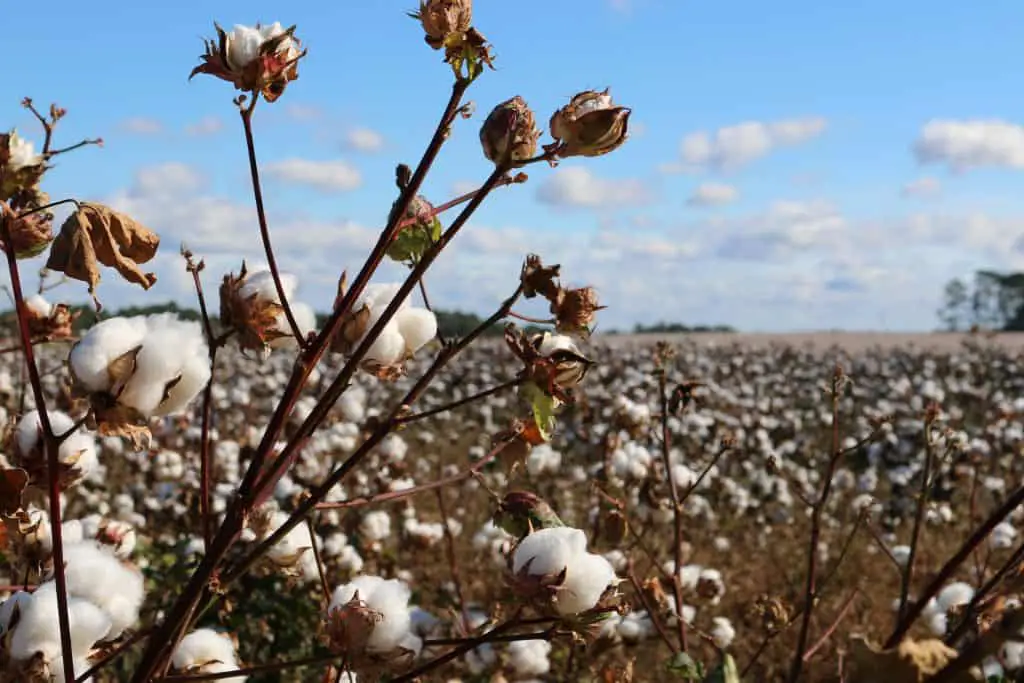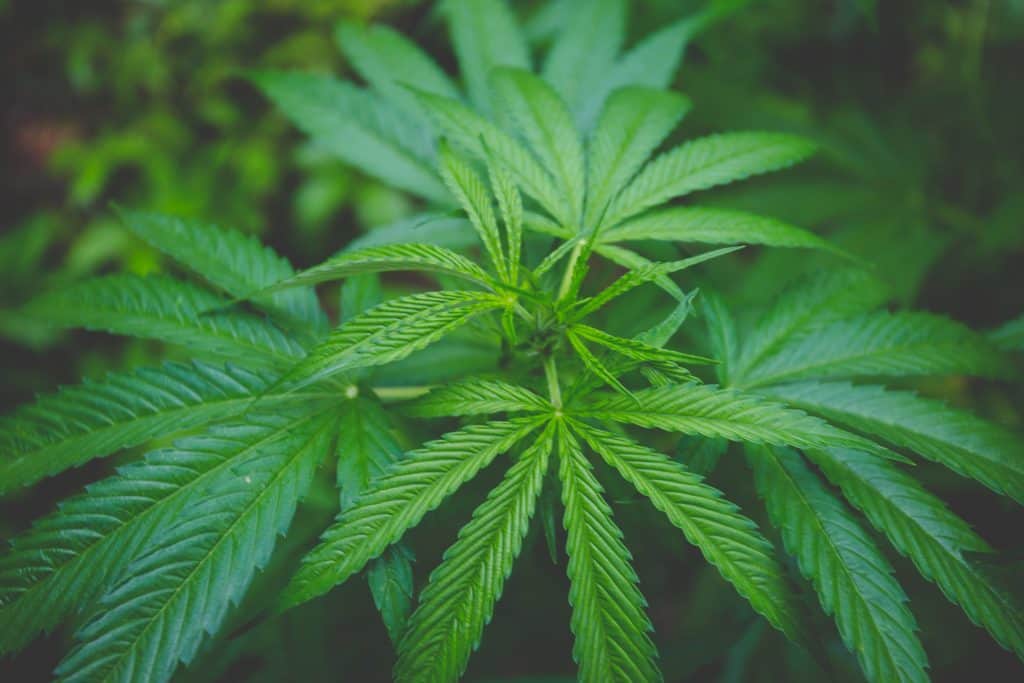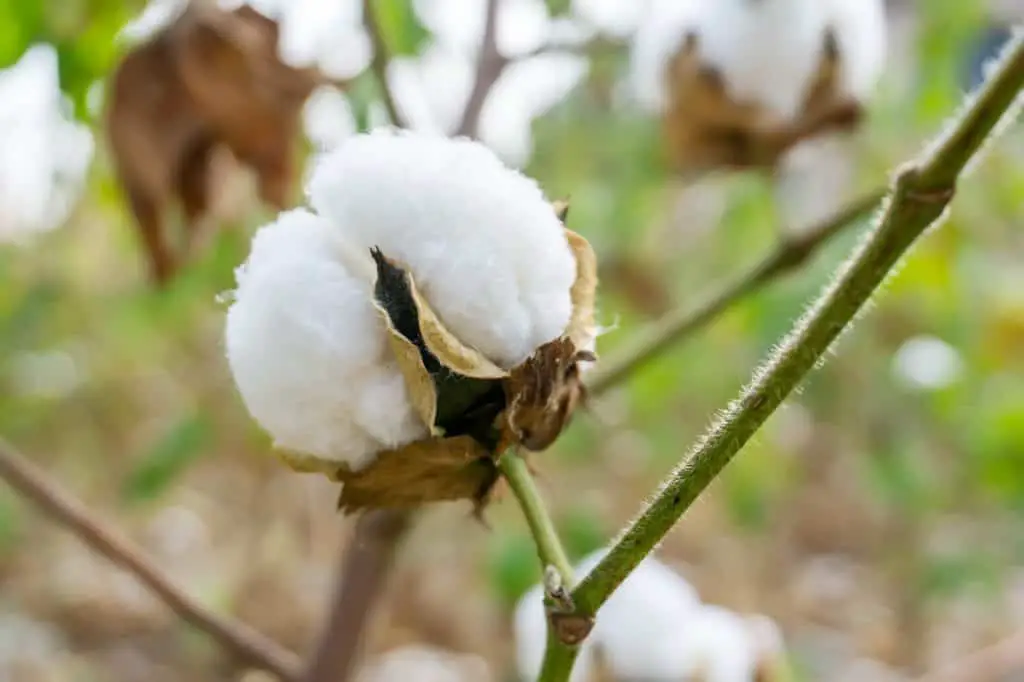In recent years, many people have divided to turn green, whether by becoming vegan or turning into environment activists who advocate for healthier choices for the planet.
Either way, the call for new, vegan, eco-friendly material has inspired extensive research of different natural and unnatural materials. It’s often the case that natural doesn’t always mean white, and synthetic doesn’t necessarily mean black.
Numerous materials have been spawn into the vegan fashion industry. Some of these are faux leather, piñatex, linen, cotton, and hemp. Today, we focus on these two: cotton and hemp.
It’s indeed challenging to find a vegan alternative that doesn’t cause harm to the environment. We’re here to break down all the information you need to know about both materials to decide which is generally greener.
Buckle up, ladies and gentlemen! We’re going to inform you about each material separately first before establishing a comparison between the two.
Cotton: The Demanding Crop

Cotton enjoys wide popularity because it’s a soft, breathable, and lightweight fabric. However, the fact that it’s popular among manufacturers and consumers alike doesn’t make it any less harmful for the environment.
While it’s known in some countries as the “white gold,” it’s dubbed the demanding crop in several other countries, and for a myriad of reasons. Some of the reasons why cotton is harmful are attributed to the water it consumes, the pollution it causes, and the chemicals it uses.
To begin with, the cotton harvest needs huge amounts of water to grow. Just to give you a glimpse of how demanding it is, let’s start by saying that it takes around 3,000 liters of water to produce a shirt or a pair of cotton pants.
Some countries don’t have enough water resources already. But since they depend on cotton for income, they keep depleting their resources until there’s just not enough water for human beings to drink or use.
We understand that this might seem unrealistic to you, but this is precisely what happened to the Aral Sea, and what will continue to happen if we don’t find better irrigation methods and healthier alternatives to traditional cotton.
Like Poet W. H. Auden puts it: “Thousands have lived without love, not one without water.” It’s indeed hard to imagine a life where there is no water!
Secondly, the cotton industry largely contributes to water pollution. In cotton factories, heavy chemicals are used either to dye cotton or mold it into different clothing items. The waste is then disposed of into clean water.
Thirdly, having mentioned chemicals, it’s a well-known fact that cotton farming uses heavy insecticides and fertilizers to combat the pests that feed on the cotton plant. These chemicals then root deep down into the soil or slip into water resources, causing the pollution of surface and groundwater.
> Read more: 3 reasons why cotton is not sustainable
Hemp: An Alternative

Such good claims have been made about hemp being a more sustainable material than cotton. It’s biodegradable and renewable; it needs little water and renews the soil with each growth cycle. If this is the case, why can’t it replace cotton? Is it environmentally better? Read on to find out.
For a long period, hemp was illegal in many countries because it belongs to the cannabis Sativa type of plants. It’s even dubbed marijuana’s cousin, but it doesn’t have a similar effect to marijuana!
The main reason why hemp is less popular than cotton is that it isn’t as soft as cotton, but that doesn’t diminish the other good features hemp displays.
For instance, unlike cotton, hemp doesn’t need much water to grow. In fact, it requires minimal water, merely the third of what organic cotton needs.
Additionally, hemp is naturally pest-resistant, meaning that there’s no need for the heavy application of pesticides to protect the crop.
Furthermore, the fact that hemp is a fast-growing plant makes it more practical and sustainable! It takes only 3-4 months to yield an ample harvest.
On the other hand, hemp is NOT the perfect material, as you might have guessed. Two downsides of hemp are that it’s much pricier than cotton, and it’s not as available worldwide.
Because of its expensive price, hemp is often mixed with cotton to reduce its cost. Additionally, since it’s still illegal in some countries and has strict regulations governing its growth in others, it’s not popular among farmers.
Comparison Table
Table time! If you feel a bit confused, inspect this comparison table that summarizes the points mentioned above.
| Comparison Point | Cotton | Hemp |
| Water Consumption | Requires around 10,000 liters of water to produce 1kg of material | Requires approximately 2,300 liters of water to produce 1kg of textiles |
| Pesticides | Depends heavily on pesticides | Requires little to no pesticides to grow |
| Cost | Less expensive than hemp and organic cotton | More expensive |
| Availability | More available | Not as available as cotton is |
| Period and Space Needed to Grow | It takes a longer time to grow and needs an acre of land to produce 500 pounds of material | It takes less time to grow (3-4 months) and needs an acre to produce 1,500 pounds of material. |
Cotton vs Hemp: Who is the Winner?
It really is a tie! But we do believe that hemp is more sustainable than cotton. However, there’s a lot of work to do if we want hemp to enjoy the same cotton texture. And who knows, maybe the attempts to enhance hemp will render it less environmentally-friendly!
However, we would like to introduce a third material that could just be the future alternative: organic cotton.
Organic Cotton

Organic cotton is becoming a quality alternative that’s slowly replacing traditional cotton. It uses better irrigation methods since farmers use a distinct rotation system to maintain soil fertility across the year.
It’s also grown from non-genetically modified seeds, and insects are used instead of pesticides to ensure pest control. It’s even softer than traditional cotton (and hemp) because it’s harvested by hand.
Conclusion
Three decades ago, if someone told me I’d wear something made out of hemp, I would’ve laughed at them. However, thanks to technological advancements and awareness campaigns, we know better about the larger world we live in and the fashion industry’s smaller world.
Always look for environmentally-friendly materials because these are the future of our planet.








![[Company Profile] Will's Vegan Shoes: The Best Products They Offer 35 Will's Vegan Shoes](https://getvegan.com/wp-content/uploads/2021/10/wills-vegan-shoes-280x210.jpg)
![Everything You Need to Know About Vegan Shoes [Ultimate Guide] 38 vegan shoes guide](https://getvegan.com/wp-content/uploads/2021/07/vegan-shoes-280x210.jpg)
![[Company Profile] 15:21: The Best Products They Offer 41 15:21 Company Profile](https://getvegan.com/wp-content/uploads/2021/07/1521-store-1-280x210.jpg)
![[Company Profile] Matt & Nat: The Best Products They Offer 44 Matt and Nat](https://getvegan.com/wp-content/uploads/2021/04/matt-nat-280x210.jpeg)
Leave a Reply